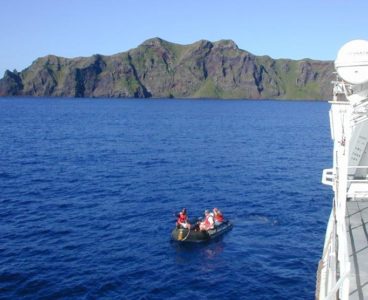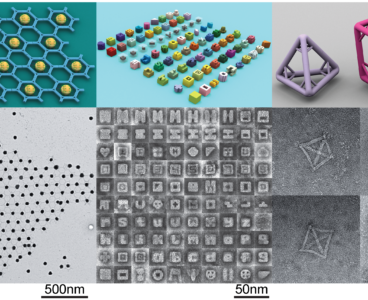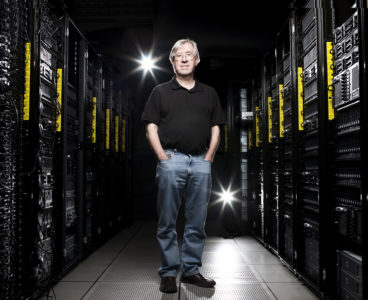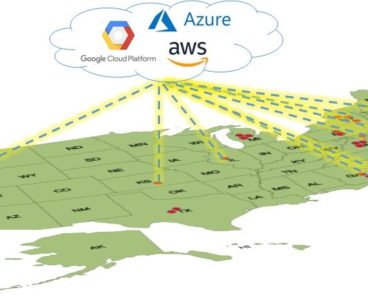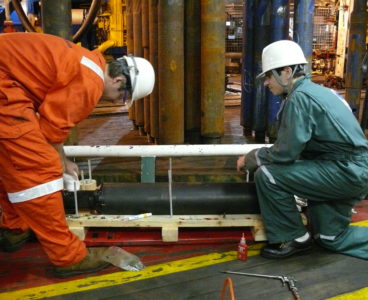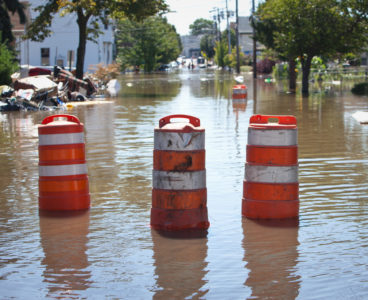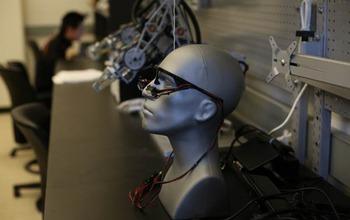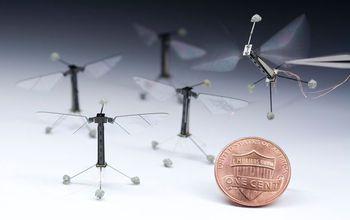Slow-motion collisions of tectonic plates under the ocean drag about three times more water down into the deep Earth than previously estimated, according to a first-of-its-kind seismic study that spans the Mariana Trench, a crescent-shaped trench in the Western Pacific that measures 1,500 miles long and is the deepest ocean trench in the world. The…
NSF Announces $78.2 Million to Support Frontiers of Cybersecurity, Privacy Research
New Institute to Address Massive Data Demands from Upgraded LHC
New NSF Awards Support the Creation of Bio-Based Semiconductors
To address a worldwide need for data storage that far outstrips today’s capabilities, federal agencies and a technology research consortium are investing $12 million in new research through the Semiconductor Synthetic Biology for Information Processing and Storage Technologies (SemiSynBio) program. The goal is to create storage systems that integrate synthetic biology with semiconductor technology. SemiSynBio,…
NSF Supports Development of New Nationwide Data Storage Network
The National Science Foundation (NSF) is announcing a $1.8 million grant for the initial development of a data storage network over the next two years. A collaborative team will combine their expertise, facilities and research challenges to develop the Open Storage Network (OSN). OSN will enable academic researchers across the nation to work with and share their…
Study Finds World’s Largest Desert, the Sahara, Has Grown by 10% Since 1920
Leading Cloud Providers Join with NSF to Support Data Science Frontiers
The National Science Foundation (NSF) is providing nearly $30 million in new funding for research in data science and engineering through its Critical Techniques, Technologies and Methodologies for Advancing Foundations and Applications of Big Data Sciences and Engineering (BIGDATA) program. NSF’s awards are paired with support from Amazon Web Services (AWS), Google Cloud Platform (GCP),…
NSF Reveals New Funding Awards for Data Science Projects
NSF-Funded Researchers Demonstrate Advanced Network Applications
Slow Earthquakes in Ocean Subduction Zones Shed Light on Tsunami Risk
Understanding “slow-slip” earthquakes on the seafloor — seismic events that occur over a period of days or weeks — is giving researchers new insights into undersea earthquakes and the subsequent creation of tsunamis. Through an ocean discovery program supported by the National Science Foundation (NSF), scientists are studying the seafloor off the coast of Japan.…
NSF Announces 2017 Winners for Generation Nano: Small Science, Superheroes
On June 6, the National Science Foundation (NSF), in partnership with the National Nanotechnology Initiative (NNI), named the first- and second-place winners, as well as the People’s Choice winner, for the second annual Generation Nano competition. Generation Nano challenges high school students to imagine novel superheroes who use the power of nanotechnology — technology on…
New Tool Could Help Predict, Prevent Surging Waters in Flood Plains
Cutting-edge Filters Produce Clean Water for Developing Nations
The world’s population is projected to increase by two to three billion over the next 40 years. Already, more than three-quarters of a billion people lack access to clean drinking water and 85 percent live in the driest areas of the planet. Those statistics are inspiring chemist Ben Hsiao and his team at Stony Brook…
Connecting Data Scientists with Regional Challenges
U.S. Sees Sizable Increase in R&D Spending
U.S. research and development (R&D) performance rose to $477.7 billion in 2014 — an increase of $21.1 billion over the previous year — and is estimated to hit $499.3 billion in 2015, according to a new report from the National Center for Science and Engineering Statistics (NCSES). The NCSES report looks at two different aspects of the…
Computer Programming Made Easier
Nobody said computer programming was easy. But maybe in the future, it could be. In order to simplify program development, a National Science Foundation (NSF)-supported project called Expeditions in Computer Augmented Program Engineering (ExCAPE), is developing technology that provides human operators with automated assistance. “Computers have revolutionized our daily lives, and yet the way we…
Recreating Ancient Vertebrate’s First Step on Dry Land
Could a tail have allowed ancient vertebrates to make the transition from water to land? Reporting in Science today, researchers from Georgia Institute of Technology, Carnegie Mellon University, Clemson University and National Institute for Mathematical and Biological Synthesis described results of a groundbreaking study to answer this question using amphibious fish, a custom-built robot and mathematical models…
Future Summers Could be Hotter Than Any on Record
Antarctic Lakes Are Repository for Ancient Soot
Remote lakes in a perpetually ice-free area of Antarctica show not only the chemical signature of ancient wildfires, but also some much more recent evidence of fossil-fuel combustion, according to National Science Foundation (NSF)-funded research published this week in the journalGeophysical Research Letters. The research is based on examination of the levels of dissolved black…
Robots to Provide a Steadying Hand at the Right Time
Many new robots look less like the metal humanoids of pop culture and more like high-tech extensions of ourselves and our capabilities. In the same way eyeglasses, wheelchairs, pacemakers and other items enable people to see and move more easily in the world, so will many cutting-edge robotic systems. Their aim is to help people…

